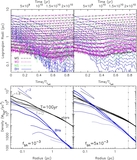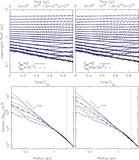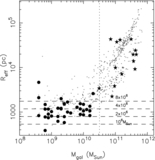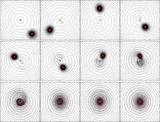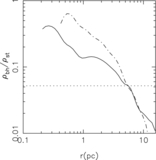Image Details
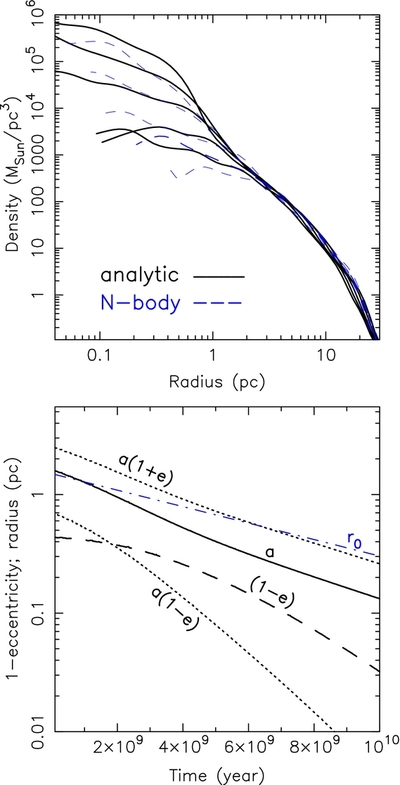
Caption: Figure 4.
Top panel shows the evolution of the density of 10 M☉ BHs due to dynamical friction against the field stars. The density profiles are shown at t = (0, 2, 4, 6, 8) Gyr. Blue dashed curves were obtained via direct N-body simulations; black solid curves correspond to the results of our semi-analytical model in which the frictional force was computed using Equation (4), which accounts for the contribution of the fast-moving stars to the frictional force. The bottom panel shows the evolution of angular momentum (1 − e) and semi-major axis (a) of a 10 M☉ BH in our GC model. The blue dot-dashed curve shows the break radius evolution of the background model. Note that as the BH reaches roughly r0/2, its orbital radius migrates inward on a timescale similar to that over which the core in the background density evolves because of two-body relaxation.
Copyright and Terms & Conditions
© 2014. The American Astronomical Society. All rights reserved.


